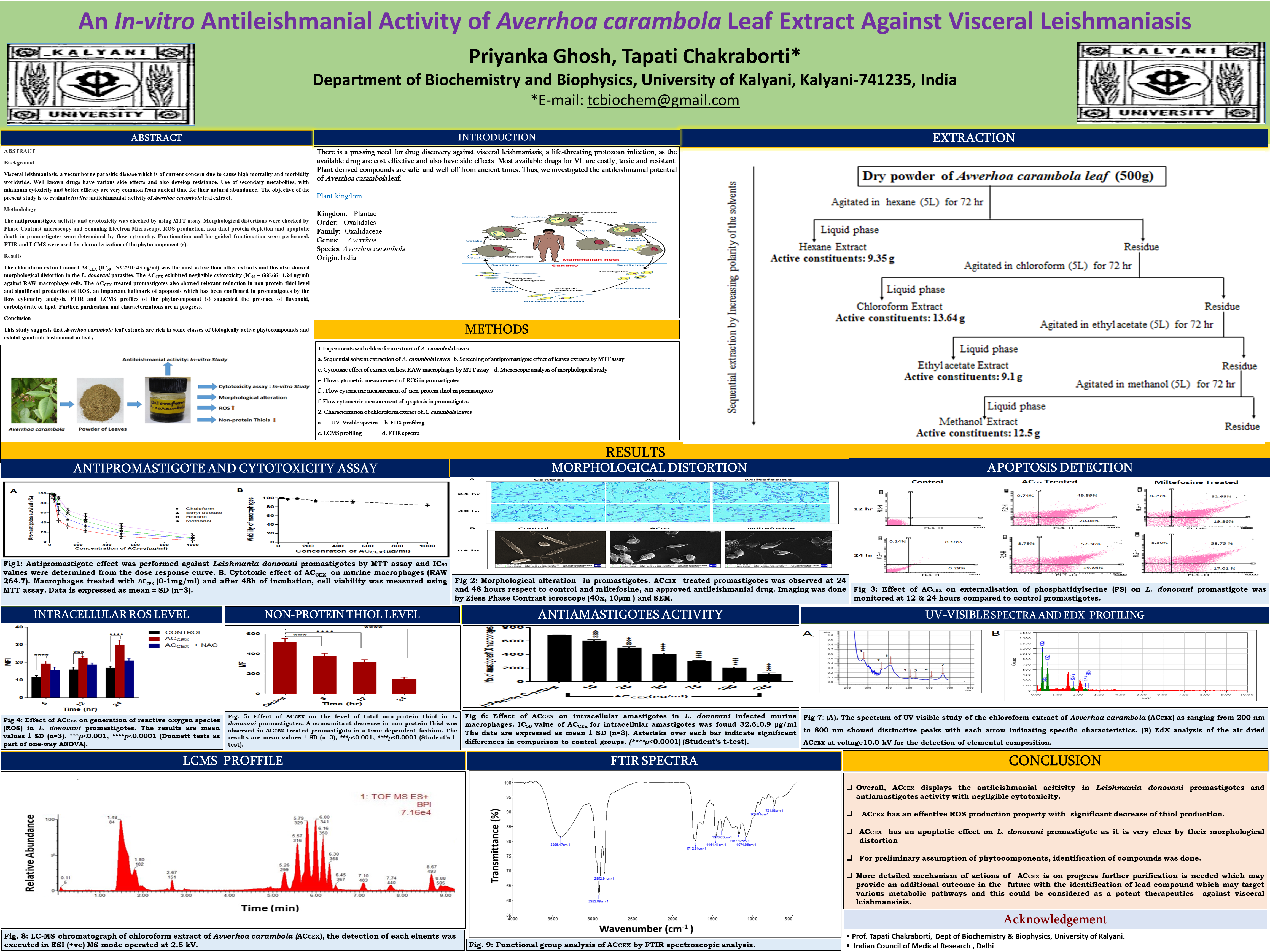PRIYANKA GHOSH
Conference 2024 Poster
Poster Title
An In-vitro antileishmanial activity of Averrhoa carambola leaf extract against visceral leishmaniasis
Authors and Affiliations
Priyanka Ghosh1, Tapati Chakraborti1
1.Department of Biochemistry and Biophysics, University of Kalyani, Kalyani-741235, India
Abstract
Background
Visceral leishmaniasis, a vector borne parasitic disease which is of current concern due to cause high mortality and morbidity worldwide. Well known drugs have various side effects and also develop resistance. Use of secondary metabolites, with minimum cytoxicity and better efficacy are very common from ancient time for their natural abundance. The objective of the present study is to evaluate in vitro antileishmanial activity of Averrhoa carambola leaf extract.
Methods
The antipromastigote activity and cytotoxicity was checked by using MTT assay. Morphological distortions were checked by Phase Contrast microscopy and Scanning Electron Microscopy. ROS production, non-thiol protein depletion and apoptotic death in promastigotes were determined by flow cytometry. Fractionation and bio-guided fractionation were performed. FTIR and LCMS were used for characterization of the phytocomponent (s).
Results
The chloroform extract named ACCEX (IC50= 52.29±0.43 µg/ml) was the most active than other extracts and this also showed morphological distortion in the L. donovani parasites. The ACCEX exhibited negligible cytotoxicity (IC90 = 666.66± 1.24 µg/ml) against RAW macrophage cells. The ACCEX treated promastigotes also showed relevant reduction in non-protein thiol level and significant production of ROS, an important hallmark of apoptosis which has been confirmed in promastigotes by the flow cytometry analysis. FTIR and LCMS profiles of the phytocompound (s) suggested the presence of flavonoid, carbohydrate or lipid. Further, purification and characterizations are in progress.
Conclusions
This study suggests that Averrhoa carambola leaf extracts are rich in flavonoid, carbohydrate classes of biologically active phytocompounds and exhibit good anti-leishmanial activity.


Leave A Comment